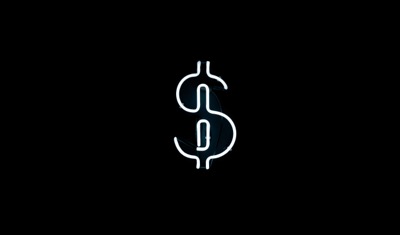3 min read
Scientist Discovered Why Most Traders Lose Money – 24 Surprising Statistics
“95% of all traders fail” is the most commonly used trading related statistic around the internet. But no research paper exists that proves this...
There is ample mainstream guidance available on how to better manage your trades. From cautioning on trade selection, to laying out the entire trading plan, there is enough material out there to guide you through your trades.
This article however, is not about regurgitating the clichéd trade management ideas, but it is rather about discussing a unique perspective to trade management and psychology that tremendously helped me with my trading – and quite frankly left me scratching my head why not enough so called “trading coaches” talk about it.
We have all heard about the importance of developing an entire trading plan well before the trade’s execution including aspects of managing the trade as it unfolds and of course the entry and exit. The idea is to have everything black and white so we can keep the guesswork out of sight and focus really on just pulling the plugs like a machine depending on how the market develops. Well I call that escapism!
Since when did markets become efficient enough to call for rigid trade management actions all the time? In a game of probabilities, not even the best traders out there can really “predict” what the market will do. They can guestimate, and calculate and match-up the likelihood of price behaving a certain way, but it’s never a sure thing. If I may ask, why exactly are we then talking about sure-shot rigid trade management plans all the time, knowing the market always has the potential to surprise you; positively and negatively?
Before your mind spins off on a tangent, I am not talking about a loose trading plan that you can bend over and mold it to your emotional states bang in the moment live! I am talking about one particular aspect of trade management which is also perhaps the most important and the deal-sealer: The EXIT!
It took me a while to figure out that pre-setting take profit levels on my trades was ruining my results left, right and center. After all, my mind had been fed with so much information on the dire need for hard pre-set take profit levels. Knowing where you want to exit is a crucial component of being a clear-headed trader right?
Well, wrong! One of the most important lessons I learned as a trader is to cut my losses short, and let my winners run. Knowing I cannot predict the market, the inherent intuition would always pull me towards a safe conservative take profit level, often at a clear nearby support and resistance point.
As price would take down my take profit price, it would prove to be a euphoric experience for me and I would happily bag it. The Caveat of course was that often times I would miss the big runners. You know the trades that wipe out several losses and really catalyze your equity curve.
If you’re going to use hard take profit levels, well forget about the big runners. That is because it would be foolish for someone to set an ambitious take profit level, while scurrying at the thought of some real-time trade monitoring.
Some would argue that leaving an open take profit level exposes you to real-time emotions as price moves – quite likely a little differently than you thought – and you are therefore more likely to mess up on the exit (cut the trade for less-than-optimal result).
Frankly, the best traders in the world know how to go with the market’s flow and adjust accordingly. How do you think they learned that skill? Surely not by just grabbing an entry criteria and setting an ultra-tight take profit level to remove the human judgment element!
And here is some food for thought: You perhaps now know why ‘trading bots’ or ‘automated trading’ hasn’t gone too far with revolutionizing trading profitability. The market is made up of us, and we understand the emotions of fear and greed more than a bot (or so called a rigid trading system) ever would!
Instead of running away from the subjective nature of trading, progressive traders will embrace the gray areas. What’s more – your true edge in the market is also hidden in the most subjective aspects of trading.
After all, how well you understand the markets and your emotions before, during and after a trading session will determine the eventual direction of your equity curve. And you are not developing these skills with rigid trade management!
Did you know that with a subjective exit strategy, three people taking the same trade could end up with very different results ranging from a full loss to a hefty profit? What determines how effectively you can milk trades to their full potential?

3 min read
“95% of all traders fail” is the most commonly used trading related statistic around the internet. But no research paper exists that proves this...

3 min read
Trendlines can be great trading tools if used correctly and in this post, I am going to share three powerful trendline strategies with you.

3 min read
Choosing the right trading journal is essential for traders wanting to analyze performance, refine strategies, and improve consistency. In this...
